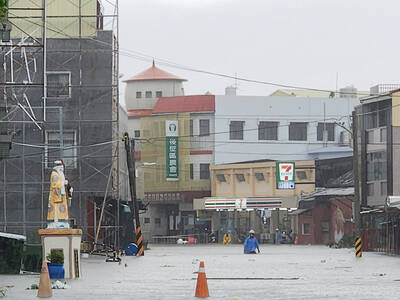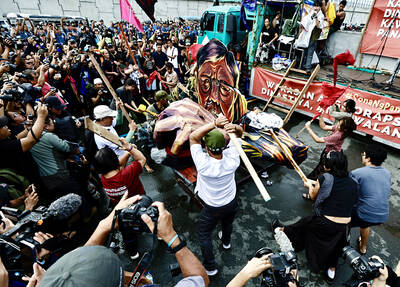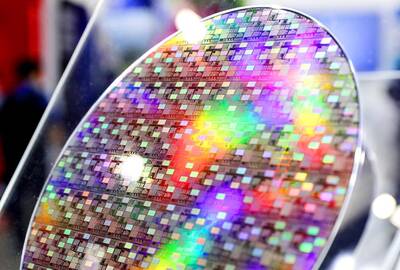Elements, Hong Kong's latest colossal shopping mall and luxury goods temple, is a living illustration of the city's bid to lure a new generation of brand-mad spenders from the Chinese mainland.
The new development has a massive 1,115m2 Gucci store, not to mention Prada, Ferragamo and Versace boutiques.
It has a direct rail link to Hong Kong's airport and buses to and from Shenzhen airport just over the border to draw some of the more than 10 million mainland visitors who pour into the southern territory each year.
The visitors above all come to Hong Kong to take advantage of low import and sales taxes on luxury brands, although the market remains in general less sophisticated than Europe.
A Chanel spokesman said the territory did not yet show a huge demand for haute couture designs in the same way that Los Angeles or Paris would, but the demand for ready-to-wear is huge.
"The Hong Kong economy has developed one of the most affluent consumer societies in the world and this in turn has created opportunities for Chanel," the spokesman said.
The company, however, also uses Hong Kong as a launching pad into China, to tap the rapidly growing middle class in major cities and has plans for expansion over the next few years.
Betty Leong, head of retail development at MTR Corp, the rail conglomerate that spent US$10 billion developing the area that includes the Elements mall, said Hong Kong was now taking full advantage of mainland appetites.
"A lot of individual visitors from the mainland travel to Hong Kong and this number will only go up. We are building on our mainland customers," Leong said. "There's definitely a big demand for luxury products here. Our statistics show the more established the brands, the better their businesses have performed."
Official figures show Hong Kongers spent HK$30 billions (US$3.8 billion) just on clothes and accessories in the first 11 months of last year, one of the highest per capita spends in Asia.
In the same period, advertising spending on luxury fashion brands in Hong Kong, including Christian Dior, Louis Vuitton, Gucci, and Dolce & Gabbana was 14 percent more than the whole of 2006 at HK$432 million, a survey by market researcher Nielsen showed.
And the advertising seems to be helping draw mainland Chinese into the fold.
A recent HSBC study showed that three-quarters of affluent mainland Chinese have bought luxury goods, citing the products' quality, fashion and status symbol as the reasons for their purchases.
Moreover, China's growing economic might means it has itself become a powerful figure in the fashion industry.
Hong Kong Fashion Week launched this week, with the Chinese shopper high in the mind of the top Asian designers who gathered to show their fall and winter collections.
"Hong Kong is an important platform to reach the China market. We have made a lot of effort to invite buyers from the mainland," said Katherine Chan, a spokeswoman for the show.
Last year, the show attracted 5,037 buyers from China, up from 4,260 in 2004.
"They have high purchasing power and are willing to spend money on fashion," Chan said.
Increasingly, luxury brands and designers are by-passing Hong Kong to head straight into China.
Last year, Italian luxury group Fendi staged a speculator fashion show on the Great Wall to show off its new line partly designed by Karl Lagerfeld, while Giorgio Armani continues to expand into major Chinese cities.
Lane Crawford, one of Asia's oldest luxury department stores based in Hong Kong, also opened its first branch in Beijing last year. It has estimated there are about four million luxury goods customers in Beijing alone.
"Whether it's luxury product or not, companies are interested in the Chinese market," said Mary Chiang, who has more than two decades of experience in public relations and represents some of the biggest global luxury brands. "China's population size is huge. It has a fast growing economy. It's only the tip of the iceberg. Whatever you sell you would want to go into China."

Rainfall is expected to become more widespread and persistent across central and southern Taiwan over the next few days, with the effects of the weather patterns becoming most prominent between last night and tomorrow, the Central Weather Administration (CWA) said yesterday. Independent meteorologist Daniel Wu (吳德榮) said that based on the latest forecast models of the combination of a low-pressure system and southwesterly winds, rainfall and flooding are expected to continue in central and southern Taiwan from today to Sunday. The CWA also warned of flash floods, thunder and lightning, and strong gusts in these areas, as well as landslides and fallen

WAITING GAME: The US has so far only offered a ‘best rate tariff,’ which officials assume is about 15 percent, the same as Japan, a person familiar with the matter said Taiwan and the US have completed “technical consultations” regarding tariffs and a finalized rate is expected to be released soon, Executive Yuan spokeswoman Michelle Lee (李慧芝) told a news conference yesterday, as a 90-day pause on US President Donald Trump’s “reciprocal” tariffs is set to expire today. The two countries have reached a “certain degree of consensus” on issues such as tariffs, nontariff trade barriers, trade facilitation, supply chain resilience and economic security, Lee said. They also discussed opportunities for cooperation, investment and procurement, she said. A joint statement is still being negotiated and would be released once the US government has made

SOUTH CHINA SEA? The Philippine president spoke of adding more classrooms and power plants, while skipping tensions with China over disputed areas Philippine President Ferdinand Marcos Jr yesterday blasted “useless and crumbling” flood control projects in a state of the nation address that focused on domestic issues after a months-long feud with his vice president. Addressing a joint session of congress after days of rain that left at least 31 dead, Marcos repeated his recent warning that the nation faced a climate change-driven “new normal,” while pledging to investigate publicly funded projects that had failed. “Let’s not pretend, the people know that these projects can breed corruption. Kickbacks ... for the boys,” he said, citing houses that were “swept away” by the floods. “Someone has

‘CRUDE’: The potential countermeasure is in response to South Africa renaming Taiwan’s representative offices and the insistence that it move out of Pretoria Taiwan is considering banning exports of semiconductors to South Africa after the latter unilaterally downgraded and changed the names of Taiwan’s two representative offices, the Ministry of Foreign Affairs (MOFA) said yesterday. On Monday last week, the South African Department of International Relations and Cooperation unilaterally released a statement saying that, as of April 1, the Taipei Liaison Offices in Pretoria and Cape Town had been renamed the “Taipei Commercial Office in Johannesburg” and the “Taipei Commercial Office in Cape Town.” Citing UN General Assembly Resolution 2758, it said that South Africa “recognizes the People’s Republic of China (PRC) as the sole